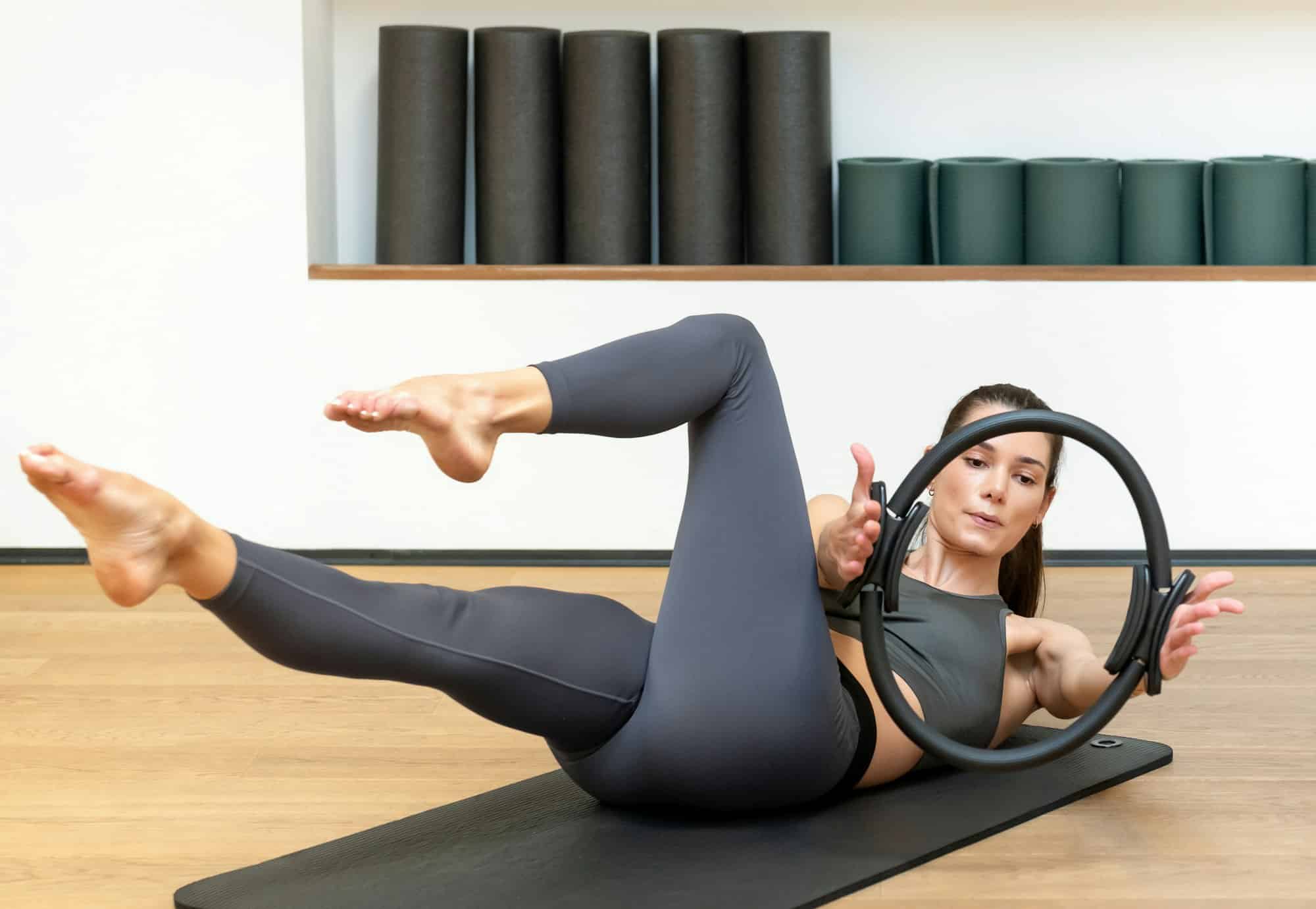Struggling with core strength or sciatica pain? Discover how consistent Pilates practice can transform your well-being. This low-impact exercise method not only enhances core stability but also alleviates tension in the lower back and legs. By targeting specific muscle groups, Pilates strengthens the body's support systems and promotes better postural alignment. Join others who have experienced significant improvements in their daily life and physical comfort through this holistic approach. Find out how to get started on your journey to a healthier, pain-free you.
Understanding Core Strength and Sciatica Pain
Core strength is the foundation of our body's stability and balance. It involves the muscles in the abdomen, lower back, hips, and pelvis working in harmony. These muscles support the spine and help maintain posture, which is crucial for preventing injuries and enhancing overall physical performance.
Have you seen this : The Impact of Dietary Fat Quality on Symptoms of Inflammatory Bowel Disease: What You Need to Know
Sciatica pain, on the other hand, is a condition characterised by pain that radiates along the path of the sciatic nerve, which runs from the lower back through the hips and buttocks and down each leg. It is often caused by a herniated disk, bone spur, or spinal stenosis compressing part of the nerve.
The connection between core strength and sciatica relief lies in the support that strong core muscles provide to the spine. By stabilising the spine, these muscles can reduce the pressure on the sciatic nerve, thereby alleviating pain. Engaging in exercises such as Pilates can be particularly beneficial. Pilates benefits include improving core strength, flexibility, and posture, which can contribute to reducing sciatica pain and preventing its recurrence. Strengthening the core not only aids in pain relief but also enhances overall mobility and quality of life.
Also read : Find your comfort: explore tailored orthopaedic solutions online
Pilates Exercises for Core Strength
Pilates is a powerful method for core strengthening, focusing on controlled movements that enhance stability and support spinal health. This approach not only targets the core but also promotes overall body awareness and flexibility.
Key Pilates Exercises
-
The Hundred: This classic Pilates exercise improves endurance and warms up the core. Lie on your back with legs lifted to a tabletop position. Extend your arms alongside your body. Breathe in, then exhale while pumping your arms up and down, maintaining a steady rhythm.
-
Plank: A fundamental exercise for building core stability. Start on all fours, then extend your legs back, balancing on your toes and forearms. Keep your body in a straight line from head to heels, engaging the core throughout.
-
Roll-Up: Enhances abdominal strength and flexibility. Lie flat with arms extended overhead. Inhale to prepare, then exhale as you roll up, reaching towards your toes. Slowly roll back down, vertebra by vertebra.
Exercise Techniques
Focus on controlled breathing and precise movements. Ensure each exercise is performed with proper alignment to maximise benefits and reduce the risk of injury. Regular practice of these Pilates exercises can significantly improve core strength, aiding in sciatica relief and overall physical well-being.
How Pilates Alleviates Sciatica Pain
Pilates offers substantial sciatica relief by focusing on strengthening the core and improving posture, which in turn reduces pressure on the sciatic nerve. This is achieved through controlled, low-impact exercises that enhance spinal alignment and flexibility, thus alleviating discomfort associated with sciatica.
Mechanism of Relief: Pilates exercises promote pain management by stabilising the lumbar region and supporting the spine. This stability decreases nerve compression, a primary cause of sciatica pain. By engaging the deep abdominal muscles, Pilates helps distribute stress evenly across the body, reducing strain on the lower back.
Comparison with Other Treatments: Unlike medications or surgical interventions, Pilates offers a non-invasive approach to pain management. While treatments like physiotherapy and chiropractic care also focus on alignment and muscle balance, Pilates uniquely combines these elements with a focus on controlled breathing and mental focus, enhancing overall well-being.
Evidence and Studies: Research supports the effectiveness of Pilates in providing sciatica relief. Studies indicate that regular practice can lead to significant reductions in pain and improvements in functional movement. This evidence highlights the benefits of incorporating Pilates into a comprehensive sciatica treatment plan, offering a holistic and sustainable approach to managing pain.
Expert Insights on Pilates for Sciatica
Expert advice underscores the transformative potential of Pilates for those suffering from sciatica. Pilates instructors often highlight its capacity to enhance core strength and improve posture, both crucial for alleviating sciatic nerve pressure.
Testimonials
-
Jane Doe, a certified Pilates instructor, notes, "Pilates offers a gentle yet effective way to manage sciatica pain. By focusing on core stability, it reduces nerve compression."
-
John Smith, a long-time Pilates practitioner, shares, "After consistent practice, my sciatica symptoms diminished significantly. Pilates has become an integral part of my routine."
Case Studies
Numerous case studies illustrate the efficacy of Pilates in sciatica relief. One study followed individuals with chronic sciatica who engaged in regular Pilates sessions. Participants reported marked improvements in pain levels and mobility, attributing their progress to the targeted exercises.
Recommendations
To integrate Pilates into daily life, experts suggest starting with short sessions, gradually increasing duration and intensity. Consistency is key. Incorporating Pilates into your routine can be as simple as dedicating 15 minutes each morning to core-focused exercises. This not only aids in sciatica relief but also promotes overall physical health.
Practical Guide for Beginners
Starting Pilates can be an exciting journey for beginners, offering both core strength benefits and potential relief from sciatica pain. To ensure a smooth start, consider these essential tips.
Begin with understanding the basics of Pilates. Focus on mastering foundational exercises like the Plank or the Hundred, which are crucial for building core strength. These exercises not only enhance stability but also support spinal health, a key factor in managing sciatica.
For those new to Pilates, a fitness guide can be invaluable. Look for routines specifically designed for beginners, which often include low-impact exercises that gradually build strength and flexibility. These routines are especially beneficial for individuals seeking sciatica relief.
Finding resources is a pivotal step in your Pilates journey. Consider joining local Pilates classes, which provide hands-on guidance from instructors. Alternatively, online tutorials can offer flexibility and convenience, allowing you to practice at your own pace. Websites and apps dedicated to Pilates often feature beginner-friendly content, making them excellent starting points.
Remember, consistency is essential. Regular practice, even if just a few times a week, can yield significant improvements in core strength and overall well-being.
Safety Tips and Modifications
Ensuring safety in Pilates is paramount, especially for those new to the practice or dealing with conditions like sciatica. Proper technique and awareness are essential to prevent injury and maximise benefits.
Important Safety Considerations
When engaging in Pilates, always prioritise fitness safety. This includes using a mat to cushion joints and maintaining proper form to avoid strain. It's crucial to warm up adequately before starting exercises and cool down afterwards to prevent muscle stiffness.
Exercise Modifications
Exercise modifications are key to accommodating various fitness levels. For beginners or those with limited mobility, consider reducing the range of motion in exercises like the Plank or Hundred. Use props such as resistance bands or pillows to support movements and reduce strain.
Listening to Your Body
Paying attention to your body's signals is vital. Recognise signs of discomfort such as sharp pain or excessive fatigue, and adjust or pause exercises accordingly. If unsure, consult a Pilates instructor to ensure exercises are performed safely and effectively. Prioritising these safety tips and modifications helps create a sustainable and injury-free Pilates practice.
Building a Consistent Pilates Routine
Establishing a consistent Pilates routine is essential for achieving core strength and alleviating sciatica pain. To maintain regularity, integrate Pilates into your daily schedule. Choose a specific time each day, such as mornings or evenings, to dedicate to your practice. This helps in forming a reliable fitness habit.
Strategies for Consistency
Begin by setting realistic goals that align with your fitness level and lifestyle. Aim for short, manageable sessions initially, gradually increasing duration as your endurance improves. Consistency in practice is more beneficial than sporadic, intense workouts.
Tracking Progress
Keep a journal to monitor your progress. Document exercises performed, duration, and any changes in pain levels. This not only motivates but also helps in identifying areas needing adjustment. Regularly reviewing your progress can guide necessary modifications to your Pilates routine, ensuring continued improvement.
Adapting Your Routine
As you advance, adapt your routine to include more challenging exercises, enhancing both core strength and flexibility. Adjusting your routine prevents plateaus and maintains engagement. Remember, the key to a successful Pilates journey lies in persistence and adaptability, fostering long-term benefits for your body and well-being.











